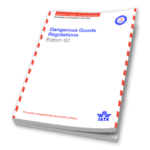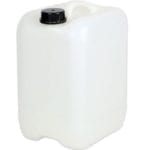We learned about State and Operator variations in the IATA and ICAO training courses, but we tend to overlook this important section in real life. We rush to get the package prepared, so we go straight to the dangerous goods list, then packaging (ignoring the state and operator variations that are listed there too), marking/labeling, completing the documents, and schedule for pickup before the cut-off time. Not complying with State and Operator variations are a common reason for shipment rejections.
Variations can be found in Section 2.8 of the IATA Regulations. Whether it’s the origin state, transiting states, and/or destination state, all of them play an important part of transporting dangerous goods. For example, CAG-09 (Canada) requires that a shipper’s declaration must show the words “24-hour number” or “numéro de 24-heures” or an abbreviation of these words followed by the telephone number and, if applicable, area and country code as part of the emergency telephone number. You can’t just write “emergency telephone number” followed by a number. Another example, USG-12 (USA) requires shipments to, from, within, or transiting must include the emergency telephone number on the shipper’s declaration (similar to Canada’s variation) and also requires that written emergency response information be immediately available with the shipment. Notice that the U.S. requires this for even transiting shipments.
Now let’s talk about the Operator variations. It’s about 2.5 pages long, just listing all the operators (carriers). Consider this a super important section because, as we all know, if you don’t “cross your t and dot your i,” it’s not going on that plane. It is easy to check the operator variations when you are directly shipping with that carrier such as FedEx, UPS, DHL, etc.; however, it can be challenging if you are using a logistics company. Therefore, always ask the logistics representative if they can inform you which carrier or even interline carriers they will be using so that you can prepare your shipment accordingly to comply with the carrier’s requirements. I mean, who wants to deal with rejected shipments, right!? For example, CX-05 (Cathy Pacific Airways) requires liquid dangerous goods in single packaging of drums and jerricans to be prepared as an overpack, such as the drum would need to go inside a fibreboard box or on a pallet. And if you are using an open overpack (like a pallet), you would need to put another pallet on top to protect it. It’s common practice to use a proper pallet to ship multiple drums/jerricans and just shrink-wrap and/or strap to ensure the packages inside are secure. However, if you overlooked this variation for a shipment going with Cathy Pacific, it would have been rejected because you didn’t put another pallet on the top.
As a shipper, it’s vital to read through the applicable state (origin, transiting if you know, and destination) and operator variations. Even though it takes a little longer to get the shipment prepared, take the time to do so. If you are reading through and don’t understand the variation, ask for help. Don’t just skip it. Rejected shipments can be costly in time and money.
The Regulatory Experts at ICC Compliance Center are always here to help ICC customers interpret regulations. Contact ICC at 1-888-977-4834 (Canada) or 1-888-442-9628 (U.S.), and ask for one of our Regulatory Experts.
Stay up to date and sign up for our newsletter!
We have all the products, services and training you need to ensure your staff is properly trained and informed.

|

|

|






